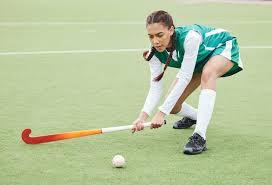Artificial Hockey Turf: High‑Performance Field Solutions

Synthetic hockey turf is the confluence of technology and sporting greatness. Unlike natural grass pitches, artificial hockey surfaces offer precise, reliable play conditions that remain unaffected by weather or season. This technology uses polyethylene monofilament fibers UV-stabilized against fading, sewn into a backing that keeps them in place. Beneath the surface layer is a shock-absorbing underlay that takes impacts, removing the risk of injury through diminished joint stress and lowered abrasion when players dive or slide.
The phrase Artificial hockey turf not only names the product; it signifies a paradigm shift in field hockey teaching, playing, and living. Coaches can design practice drills from consistent ball behavior, and clubs and schools suffer fewer field closures due to rain or wear. This shift extends beyond performance: it improves safety levels, simplifies maintenance protocols, and extends the playing season from early spring to late autumn without concern for grass recovery.
Installation and Composition
Putting down a top-quality artificial hockey pitch is a sensitive and meticulous exercise. It begins with excavation at the site: topsoil is excavated to a depth, and a sub-base of compacted aggregate or asphalt is put down to provide structural strength. A geotextile layer may also be placed to stop fine particles from migrating upward and interfering with drainage.
The second layer is the shock pad, typically made of foam or crumb rubber, and it absorbs up to 70% of impact energy. This underlay is essential to safety for players, enabling high-impact tackles or falls onto a padded surface. After the underlay has been put in place, synthetic turf rolls are laid out and seamed. Seaming tape and industrial adhesives secure the seams, creating an almost seamless surface.
Infill choice decides the turf’s ultimate properties. Sand-filled systems use fine quartz sand to retain fibers in place and control ball speed; sand-dressed pitches reduce levels of sand to facilitate faster play; water-based pitches dispense with infill entirely, employing irrigation to produce a slick, fast playing surface favored at international competition. Infill is installed and brushed into fibers by specially designed machines to achieve a flat profile to predetermined performance requirements.
- AI
- Vitamins
- Health
- Admin/office jobs
- News
- Art
- Causes
- Crafts
- Dance
- Drinks
- Film
- Fitness
- Food
- Giochi
- Gardening
- Health
- Home
- Literature
- Music
- Networking
- Altre informazioni
- Party
- Religion
- Shopping
- Sports
- Theater
- Wellness


